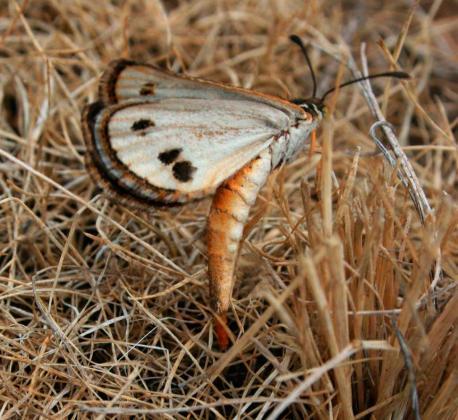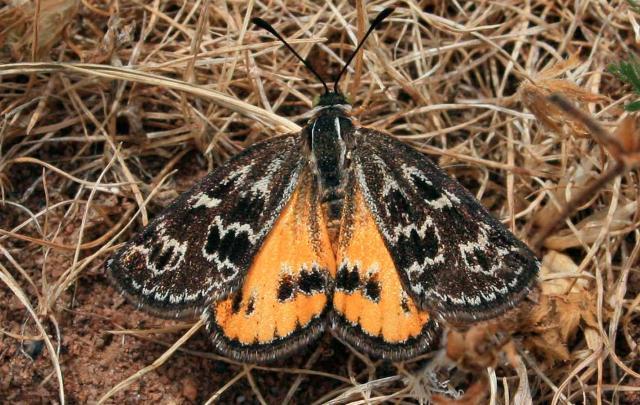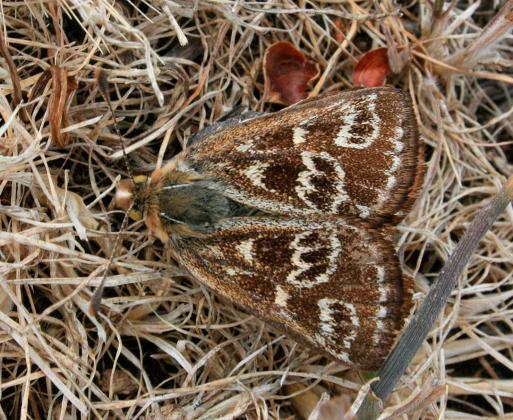


Golden Sun Moth
Synemon plana
| Details | |
|---|---|
| Type | Invertebrate |
| Group | |
| Biology | Active only during the hottest part of hot, sunny, and relatively still days. The adult moths live for 1-4 days. Larvae spend 2 or more years underground. Adult moths emerge from underground between November-December. Females lay 100 to 150 eggs; they rarely fly and mostly walk. Males can make long flights but do not travel more than 100 m away from suitable habitat patches. This means it is difficult for them to colonise new areas at a distance. |
| Distinctive Markings | Day flying moth. Clubbed antennae. The female's upper hindwing is bright orange with black spots along the edges; the male's is bronze-brown. |
| Taxonomy | |
|---|---|
| Phylum | Arthropoda |
| Class | Insecta |
| Order | Lepidoptera |
| Family | Castniidae |
| Genus | Synemon |
| Species | plana |
Source: Atlas of Living Australia
Threats to the survival of this critically endangered moth are loss of its grassland habitat through clearing, degradation and fragmentation. Pesticide and fertiliser use as well as weeds can also affect its survival.
| Interesting Facts | |
|---|---|
| Diet | Herbivore. Larvae feed on the roots of native grasses. |
| Habitat | Native grasslands and grassy woodlands, especially those with wallaby grasses (Rytidosperma spp.), but also grasslands with native red-leg grass (Bothriochloa macra), spear-grasses (Austrostipa spp.), weeping grass (Microlaena stipoides var. stipoides) or kangaroo grass (Themeda triandra). They prefer grasslands with bare ground between tussocks, probably so males can more easily find females. |
| Native Status | Native to Australia |